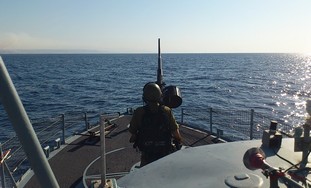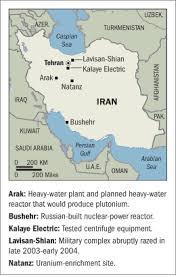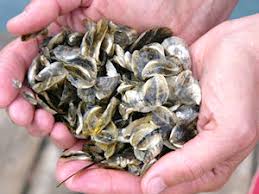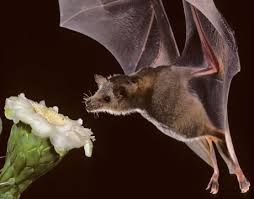News: Some New, Some Old:
Waldo Canyon Fire 2012:

“This aerial photo shows the destructive path of the Waldo Canyon fire in the Mountain Shadows subdivision area of Colorado Springs, Colo., Thursday, June 28, 2012.”
___________
With new fence, Navy readying for sea-terror swell
“Navy fears Sinai terror groups will try infiltrating Israel by sea  after construction of border fence is completed by year's end.
after construction of border fence is completed by year's end.
The navy is preparing to bolster its forces in the Red Sea, the Mediterranean Sea and along the Gaza Strip amid fears that terrorist groups in the Sinai will try infiltrating Israel by sea after construction of the security fence is completed along the border with Egypt.

The Defense Ministry has so far completed the construction of a fence along 170 km of the border and plans to complete the project by the end of the year.
The fence is 5 meters high and is covered in two layers of barbed wire. In addition, the border is lined with dozens of towers with radar systems which provide persistent ground surveillance of the border to warn of infiltrations.
In addition to the fence and radars, the IDF has also bolstered its deployment along the border with the establishment of a new regional brigade and an additional Combat Intelligence Battalion, responsible for surveillance along the border.
The Navy’s concern is that following the completion of the border fence, terrorists – trying to infiltrate Israel – will do so by sea. One scenario is that terrorists from the Sinai Peninsula either swim or sail from Egypt straight into Eilat.” More at: http://www.jpost.com/Defense/Article.aspx?id=274173
___________
Understanding Our Rapidly Changing World Scene
“World conditions worsen almost daily even while most sleep on, blissfully unaware of the tragic direction of major global trends. Take a brief but sweeping look at most newsstands. Today celebrity magazines almost totally dominate—filled with "tittle-tattle" about movie and TV personalities, famous sports stars and the like.
Instead much of our attention should be focused on events now occurring in the Middle East and Europe. For instance, will Iran be allowed to build the bomb or will she be forced by the West to abandon her nuclear ambitions? Observers read the signs very differently.
 Take Associate Professor of International Relations at USC, Jacques C. Hymans, writing in the current issue of Foreign Affairs, for example. His article is aptly summarized in the table of contents: "Nuclear weapons are hard to build for managerial reasons, not technical ones. This is why so few authoritarian regimes have succeeded. They don't have the right culture or institutions. When it comes to Iran's programs, the United States and allies should get out of the way and let Iran's worst enemies gum up the process on their own" (May-June 2012).
Take Associate Professor of International Relations at USC, Jacques C. Hymans, writing in the current issue of Foreign Affairs, for example. His article is aptly summarized in the table of contents: "Nuclear weapons are hard to build for managerial reasons, not technical ones. This is why so few authoritarian regimes have succeeded. They don't have the right culture or institutions. When it comes to Iran's programs, the United States and allies should get out of the way and let Iran's worst enemies gum up the process on their own" (May-June 2012).
But can vulnerable Israel, the United States and the West really afford to indulge in such a potentially lethal gamble? Elliott Abrams, writing in World Affairs (May-June 2012), is at the other end of the spectrum of opinion. "The dangers it [Israel] faces from an Iranian nuclear weapon are unique and, I will argue, are dangers no nation should be asked to accept . . . Official Iranian comments about Israel are continually genocidal in nature."
Elliot Abrams describes the overall strategy: "Tel Aviv, Jerusalem and Haifa contain over 60 percent of the Jewish population that Iran could target with its Shabab3 ballistic missiles, killing all of their inhabitants."
This is acceptable discourse at Iran's highest levels of government. Earlier this year, Ayatollah Khamenei, Iran's supreme leader, referred to Israel as a "cancerous tumor that should be cut and will be cut."
"What Would a Nuclear Iran Mean for the World? ," discusses these crucial issues in detail. Several related articles follow. Seriously keeping up with current affairs remains an integral part of wisely watching current events and trends. Jesus Christ did tell us to be acutely alert to what is happening in the world (see Mark 13:33-37 and Luke 21:34-36)” More at: http://www.ucg.org/blog/understanding-our-rapidly-changing-world-scene/
___________
Texas Gulf States Celebrate a Victory with the Passage of the RESTORE Act.
Legislation ensures BP fine money is used to restore the natural resources and economy of the Gulf Coast.
“The passage of the RESTORE Act is a victory not just for the Gulf States but for all Americans. If you live in America, you rely on the Gulf of Mexico. The Gulf comprises the 29th largest economy in the world. It produces a huge majority of the seafood Americans eat, including 67 percent of our oysters. One third of the domestic oil we use comes from the Gulf. It supports one of the country's largest recreation and tourism industries — to the tune of $20 billion a year and more than 600,000 jobs.
The RESTORE Act will help revitalize the entire region by ensuring the bulk of the fines collected from those responsible for the Deepwater Horizon oil spill are directed back to the area where it is needed most, the Gulf of Mexico.” More at: http://www.nature.org/ourinitiatives/regions/northamerica/unitedstates/texas/newsroom/texas-gulf-states-celebrate-a-victory-with-the-passage-of-the-restore-act.xml
___________
Energy Giant Ditches Coal Plant Retrofit

Kentucky ratepayers breathe sigh of relief over Big Sandy coal plant. She’s big, dirty and 42-years old—that’s old in power plant years.
“They call her Big Sandy in Kentucky and she has two and a half years to clean up her act until she’s either shut down or replaced with newer, cleaner energy resources.
Right now, she burns millions of tons of coal each year, equaling about 90 railroad cars of the black fuel every day. She emits more than 37,000 tons of sulfur dioxide, 3,700 tons of nitrogen oxides, and 5.6 million tons of carbon dioxide in 2010. That’s a whole lot of air pollution.
The Kentucky Power Company, owned by mega-energy giant American Electric Power, had proposed a near billion dollar upgrade to make the coal-fired power plant based in Louisa, legal and clean up her air pollution. But the price tag would be passed along to Kentucky ratepayers, who were bracing for a more than 30 percent increase in their electricity bills.
Earthjustice representing the Sierra Club, opposed the rate hike and the proposed $940 million investment in installing pollution controls. Retiring Big Sandy unit #2 and replacing it with cleaner energy alternatives would cost much less while providing Kentuckians with healthier air and fatter wallets.
Today, the power company withdrew their rate hike proposal without a ruling from the Kentucky Public Service Commission. The company spokesperson says they will need time to re-evaluate the next steps.” More at: http://earthjustice.org/blog/2012-may/energy-giant-ditches-coal-plant-retrofit
___________
Acidification Threatens Oceans' Food Web
 “It started in 2005, when baby oysters began dying by the billions in Oregon and Washington. At first, the fishermen weren’t worried, hardened by years of dealing with nature’s fickleness. But, when the die-offs continued year after year, seamen and scientists alike started seeking answers. What they found is that the impacts from carbon pollution that scientists have been warning about for decades are occurring now. It turns out that while the world’s eyes have been trained on the changes to the land, the ocean has been quietly undergoing its own transformation.
“It started in 2005, when baby oysters began dying by the billions in Oregon and Washington. At first, the fishermen weren’t worried, hardened by years of dealing with nature’s fickleness. But, when the die-offs continued year after year, seamen and scientists alike started seeking answers. What they found is that the impacts from carbon pollution that scientists have been warning about for decades are occurring now. It turns out that while the world’s eyes have been trained on the changes to the land, the ocean has been quietly undergoing its own transformation.
As carbon pollution increases, oceans absorb the carbon, creating acidic waters that are hostile to species that build shells or skeletons of calcium carbonate. Affected species include corals, tiny sea butterflies known as pteropods and, of course, oysters. All play crucial roles in the marine food web. In addition to the West Coast’s multi-million dollar oyster industry, this unprecedented change in ocean chemistry is also predicted to negatively impact the 1.5 billion people who depend on the ocean’s bounty for their livelihood.”

NASA
“We hear a lot about how carbon dioxide emissions are warming the atmosphere and changing climate in ways that are damaging, if not catastrophic, for life on Earth.
Increasingly we are also learning about the impact of carbon dioxide on the oceans. As the sea absorbs carbon from the air its chemistry is changing, becoming more acidic. This also is likely to have a profound impact on life, experts warn.”

More than 150 marine scientists from 26 countries called for immediate action by policymakers to reduce carbon dioxide emissions sharply so as to avoid widespread and severe damage to marine ecosystems from ocean acidification. They sounded the alarm in the Monaco Declaration, according to a news release by Unesco.
Ocean acidification could affect marine food webs and lead to substantial changes in commercial fish stocks, threatening protein supply and food security for millions of people as well as the multi-billion dollar fishing industry, the Monaco Declaration says.
“Coral reefs provide fish habitat, generate billions of dollars annually in tourism, protect shorelines from erosion and flooding, and provide the foundation for tremendous biodiversity, equivalent to that found in tropical rain forests,” the Declaration says.
“Yet by mid-century, ocean acidification may render most regions chemically inhospitable to coral reefs. These and other acidification related changes could affect a wealth of marine goods and services, such as our ability to use the ocean to manage waste, to provide chemicals to make new medicines, and to benefit from its natural capacity to regulate climate.
“For instance, ocean acidification will reduce the ocean’s capacity to absorb anthropogenic CO2, which will exacerbate climate change.” More at:http://newswatch.nationalgeographic.com/2009/02/02/ocean_acidification/
___________
Australia to create world's largest marine reserve

Australia says it will create the world's largest network of marine parks ahead of the Rio+20 summit. The reserves will cover 3.1 million sq km of ocean, including the Coral Sea.”
 The Coral Sea is home to diverse wildlife, including sharks and tuna
The Coral Sea is home to diverse wildlife, including sharks and tuna
“Restrictions will be placed on fishing and oil and gas exploration in the protected zone covering more than a third of Australia's waters.
Environment Minister Tony Burke, who made the announcement, will attend the earth summit in Brazil next week with Prime Minister Julia Gillard. "It's time for the world to turn a corner on protection of our oceans," Mr Burke said. "And Australia today is leading that next step." More at: http://www.bbc.co.uk/news/world-asia-18437040
___________
Fireworks and Furry Family Members
“Every July 4th there are pet casualties, so I thought I’d take this opportunity well in advance of Independence Day celebrations to remind dog and cat owners of the dangers associated with this particular holiday.”
Many Pets Fear Fireworks Displays

Signs your pet is afraid of fireworks include shaking, barking, howling, excessive drooling, hiding, or escape attempts.
“Fireworks displays can be stressful and frightening for pets, so if you’re planning to take your pet along, I recommend you rethink that idea. Even normally calm dogs can get spooked and disoriented by the noise, lights and crowds involved in a fireworks display. You certainly don’t want to frighten your pet or put him in a situation where he might bolt or become aggressive due to fear.
Even pets left at home can be frightened of the loud noises that seem to go on and on the evening of July 4th. Your dog or cat has a much better sense of hearing than you do, so loud, unfamiliar sounds can be especially unsettling. And this goes double if your pet is getting up in years.
Even small firecracker or sparkler displays by neighbors or family members can upset your pet. With planning, you can prevent problems with your pet over the July 4th holiday.” Read article at: http://healthypets.mercola.com/sites/healthypets/archive/2012/06/22/fireworks-effects-on-pets.aspx
_____________
Purses With Lead Sold at Popular Retailers

“Is there a hidden danger in purses, an accessory that millions of Americans never leave home without?
The Center for Environmental Health found lead in handbags sold at one out of four retail stores it visited. A groundbreaking new investigation by a consumer watchdog group is raising the question: Is there a hidden danger in purses, an accessory that millions of Americans never leave home without?
The Center for Environmental Health found lead in handbags sold at one out of four retail stores it visited. The consumer group said that it discovered lead in the sides of 43 of the 300 purses it tested in a lab, even though hundreds of handbag manufacturers signed a court settlement to limit the lead in their products. The five purses that contained the most lead were made by Tory Burch, Guess, House of Harlow, Nine West and Charlotte Russe.
Click here to see whether you own a purse from one of the manufacturers.
The group said its concern was that lead can rub off products such as purses and get into the body of a woman or her children. “Lead is stunningly toxic,” said Michael Green, the group’s executive director. “We find it really distressing that some of these companies had this problem.”
The lab results showed the Tory Burch purse contained nearly 200 times more lead than the limit permitted by the legal agreement with the Center for Environmental Health.” More at: http://abcnews.go.com/blogs/business/2012/06/purses-with-lead-sold-at-popular-retailers-consumer-group-finds/
____________
Spanish company stops wind-turbine project
“Gamesa Inc. has canceled a controversial wind-power project it planned to build on Shaffer Mountain in a major flyway for migrating hawks, eagles and bats along the border of Somerset and Bedford counties.
The 30-turbine, 60-megawatt commercial wind-power project on 22,000 ridge-top acres was scheduled for construction this year and was to come on line in 2013. But its location stirred opposition from environmental, conservation and sportsmen's organizations, almost from the time it was proposed in 2006.
In November, a coalition of those organizations threatened to sue the U.S. Fish and Wildlife Service for issuing an opinion allowing the turbines to be  built near a maternity colony of Indiana bats. The service subsequently agreed to reconsider its opinion.”
built near a maternity colony of Indiana bats. The service subsequently agreed to reconsider its opinion.”
Bats: Ecologically Important Mammals
Remember bats are pollinators
"I'm really happy. It took five-and-a-half years, a lot of time and effort was spent opposing this project, and I'm glad it's over for now," said John Buchan, an attorney and leader of local opposition to the project.
Mr. Buchan said the project's potential impacts on the migratory bird corridor and Piney Run and Clear Shade Creek, two of the state's 28 "exceptional value" trout streams, played roles in the opposition but the bat issue was key.” Read more: http://www.post-gazette.com/stories/local/region/spanish-company-stops-wind-turbine-project-640065/#ixzz1zDGz01GT
-----------------
Bats and Economics “Indiana bats declined by 55 percent in less than ten years and are listed as endangered. Many of the world's most economically important plants rely on bats. Some crops from these plants are valued in the hundreds of millions of dollars each year and are crucial to the economies of cash-poor developing countries.
“Indiana bats declined by 55 percent in less than ten years and are listed as endangered. Many of the world's most economically important plants rely on bats. Some crops from these plants are valued in the hundreds of millions of dollars each year and are crucial to the economies of cash-poor developing countries.
Many of our cultivated crop plants still rely on bats for their survival in the wild. These include fruits such as bananas, plantain, breadfruit, avocados, dates, figs, peaches, and mangoes. Other bat-dependent products are cloves, cashers, carob, balsa wood, kapok filler for life preservers (PFDs), and tequila, which comes from agaves century plants).
Even in places so hidden from humans that we are rarely aware of them, organisms that depend on bats for their survival are yielding treasures of great benefit to us. New species of bacteria discovered in North American bat caves are now being studied by major corporations for use in chemical waste detoxification, gasohol production, and improved detergents. Still others may soon be used in the production of new antibiotics.
When a colony of cave-dwelling bats is lost, the potential benefits of countless microorganisms and other animals perish with them. Loss of bats may seriously damage entire ecosystems upon which we depend with unpredictable and potentially disastrous consequences.” More at: http://www.wbwg.org/conservation/batFAQs.html#needtoconserve
__________
On This Day:
Soviet cosmonauts perish in reentry disaster, Jun 30, 1971:
“The three Soviet cosmonauts who served as the first crew of the world's first space station die when their spacecraft depressurizes during reentry.
On June 6, the cosmonauts Georgi Dobrovolsky, Vladislav Volkov, and Viktor Patsayev were launched into space aboard Soyuz 11 on a mission to dock and enter Salyut 1, the Soviet space station that had been placed in orbit in April. The spacecraft successfully docked with the station, and the cosmonauts spent 23 days orbiting the earth. On June 30, they left Salyut 1 and began reentry procedures. When they fired the explosive bolts to separate the Soyuz 11 reentry capsule from another stage of the spacecraft, a critical valve was jerked open.
One hundred miles above the earth, the capsule was suddenly exposed to the nearly pressureless environment of space. As the capsule rapidly depressurized, Patsayev tried to close the valve by hand but failed. Minutes later, the cosmonauts were dead. As a result of the tragedy, the Soviet Union did not send any future crews to Salyut 1, and it was more than two years before they attempted another manned mission.”
___________
Yesterday:
Misty and I went to get Jay, so we enjoyed her walk down there. I had expected to take Jay into town to cash his check, but he had already done it. So I changed into work clothes. It was rather muggy, though not too hot, so I raked pine needles, and he mowed all three lots. Then we called it quits for the day.

















3 comments:
My oldest dog is deathly afraid of anything that goes "Bang". Thunder, gunshots, and fireworks are the worst. She shakes uncontrollably and there is no way I can comfort her. Neither holding her snugly or telling her it is OK doesn't help.
Hi, Dick, thank you for your comment.
Have you tried wrapping her up in a blankie? It seems to work for most dogs, and that why someone is making a fortune selling 'Thunder Coats'.
I was always told that if you go about things normally, and don't make a fuus over them or give them any special attention that they will get the vibes from you that all is OK, and settle down. Some dogs that I used to board were scared of thunder, but when they saw me ignoring it, they started to ignore it, too.
I hope she gets over it.
A spaniel that I had was frightened of thunder, but didn't care when the start gun when off next to him at the boat races. Go figure!
Happy Tails and Trails, Penny.
That one dog of mine goes into shakes when anything goes bang. I know of no time when she was frightened bad enough to have an lasting fear. The other two and the one that passed on were not scared of noise like that.
Post a Comment